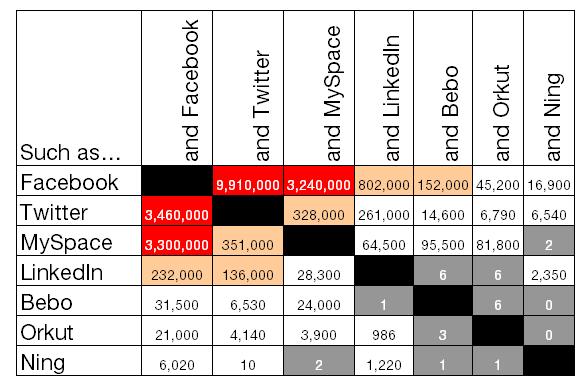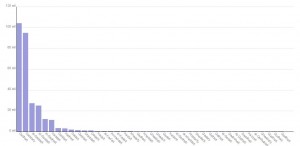Journalists and analysts love a new word. The current favourite is “phablet”, used to describe the new larger-sized smartphones that are nearly tablet-sized, but still a phone.
It’s a ghastly word, but don’t worry – it won’t catch on, despite the pick up in interest (see chart below). Here’s my theory why:
1) “smartphone” hasn’t caught on as a phrase
Smartphone is used in the industry to distinguish between the newer, touchscreen devices and older models termed feature phones that look like this (remember these?). It’s used all the time in articles and research.
But not in common language. No-one says “hey, have you seen my smartphone?” People still talk about their mobile. Or their phone. Because smartphone is both clumsy to say, and sounds pompous.
2) nobody cares about these distinctions in other areas
Like smartphone vs feature phone, we have laptop, netbook, PC – all industry distinctions. People just refer to their computer. And as we move to a world of uniform touchscreens, the only decisions people will care about are the cost, the operating system (Apple vs Android vs maybe Windows), and the size.
3) portmanteau words might be catchy, but don’t often work
Grexit? It’s had it’s day (see chart below). Descriptive words like “onesie” are much better.
4) people prefer to talk about brands
Seen my Kindle? Pass me the iPad?
and the biggest reason of all: 5) your mobile is not your device, it’s your number
Whatever device people call you on, that’s your mobile. As Christopher Mims pointed out on Quartz, we use these things less and less for calls – as little as 10% – but that doesn’t mean phone calls are completely dead. We still need to make and receive calls. And if you are sharing your contact details, no-one will ever ask for your “phablet” number – just as no-one asks for your “smartphone” number. They will ask for your mobile number.
Because you move your number across devices – I’ve had the same number for over 8 phones now, I reckon. Whether I have a phablet, a smartphone, or a something else, when it rings, I’ll answer it – and I’m on my mobile.
Charts:
 In brief: the company has changed the watermark from an obstructive, possessive gesture to a helpful, open one. It is not longer a simple stamp across the image, but a cleaner box with a short-form URL and a photographer credit.
In brief: the company has changed the watermark from an obstructive, possessive gesture to a helpful, open one. It is not longer a simple stamp across the image, but a cleaner box with a short-form URL and a photographer credit.






